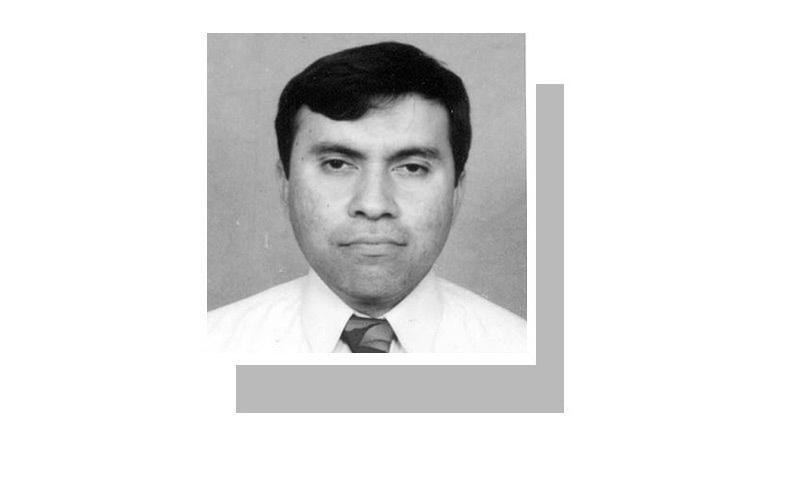
AT best, the current redevelopment of University Road in Karachi is an enormous inconvenience; at worst, it is a death trap. On Feb 9, a speeding minibus overturned on several university students, killing three. Then, another university student was killed attempting to alight from a bus.
The lack of a dependable alternative route during construction is the core reason for the hazards so many pedestrians face. Our society’s contempt for walking folk is a common trait. Every morning, one can see frightened schoolchildren holding their parents’ hands waiting to cross the city’s busy thoroughfares. With no speed limit regimes worth the name, drivers have a field day accelerating well beyond safety limits, the ultimate brunt of which is borne by the pedestrians.
Our road spaces are overloaded with vehicles, especially during the morning and evening peak hours, exerting enormous pressure on the available right of way to facilitate their movement. Motorcyclists will often drive on footpaths, leaving no room for pedestrians. Given that most of Pakistan’s urban areas are located in warm weather zones, for pedestrians to walk long distances to avail themselves of an overhead-crossing — assuming one exists — is unlikely.
Many so-called improvements have made these roads difficult to cross. Road-widening schemes, routinely undertaken to create more room for car movement, often block possibilities for pedestrian crossings by creating physical barriers; the construction of barriers and sandbag barricades in the name of security completely disrupts pedestrian movement; and all the while vehicle speeds remain alarmingly high.
Our roads reflect apathy towards pedestrians.
At the heart of our driving is a narcissistic, me-first attitude. Compounding this, many drivers in our large urban centres hail from Pakistan’s hinterlands and have only a rudimentary knowledge of how to drive, and little to no knowledge of traffic rules and road safety. Lawless driving is routinely displayed by drivers of public transport and goods transport vehicles, oil and water tankers, and even government and police vehicles. One frequently observes underage drivers speeding along the roads. Many pedestrians have been seriously injured, in some cases have even lost their lives, due to unruly driving. The traffic police, whenever spotted, remain silent observers even if pedestrians’ lives are endangered.
While our prime minister enjoys cutting ribbons for new transport infrastructure projects across the country, he has yet to inaugurate a project to facilitate safe pedestrian movement. Civic agencies read the minds of their rulers very well. Wherever vehicle conflicts are found, these agencies develop grade separated movement corridors. In contrast, no attention is given to the problems faced by pedestrians.
There are some core issues that affect the safe survival of millions of pedestrians. These include the absence of traffic management on interchanges to allow pedestrians to safely cross roads, rampant, unchecked parking of vehicles and other encroachments on footpaths, motorcycles being driven on footpaths, and excavations and road-widening schemes without regard for pedestrians.
Besides, there is the absence of covered bus stops and walkways for protection from the elements and hazardous installations (including pieces of advertisement hoardings, electricity pylons and poles across footpaths). Pedestrian bridges only serve a small cross section of users; they are totally unusable for people with disabilities, the elderly and small children. To add insult to injury, it is deplorable that pedestrians are not even protected by the law.
Hit-and-run accidents have increased tremendously in our cities; the weakest of pedestrians are usually the victims. Many of our metropolises’ major streets have surveillance cameras with meticulous documentation capacity, but little or no benefit is drawn from evidence collected from them to prevent traffic accidents or prosecute those who cause them. Often, the death of a pedestrian results in protests due to people’s anger. Some examples of unrest in the aftermath of traffic-related deaths in Karachi include that of Bushra Zaidi in 1986, Madeeha Sami in 2005 and the students in Gulshan-i-Iqbal recently.
Those who cannot afford cars and motorcycles are also human. While motorists are arguably people with a relatively stable socio-economic status, pedestrians include a mixed cross section of society dominated by low-income groups. Steps to protect them must be taken without delay.
Creating compulsory statutes to ensure pedestrian walking spaces along all major transport corridors is the foremost priority. Traffic police, city wardens and volunteers must be designated along pedestrian-sensitive zones on a regular basis. Traffic education programmes, with a focus on safe driving and road usage, must be initiated. And those who end up snuffing out innocent lives should be brought to justice. Unless errant drivers, especially those who habitually cause accidents, are punished, attitudes won’t change.
The writer is chairman, Department of Architecture & Planning, NED University, Karachi.
Published in Dawn February 14th, 2017










































